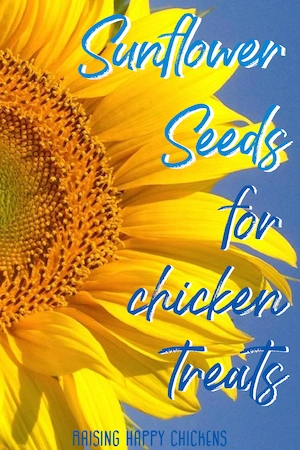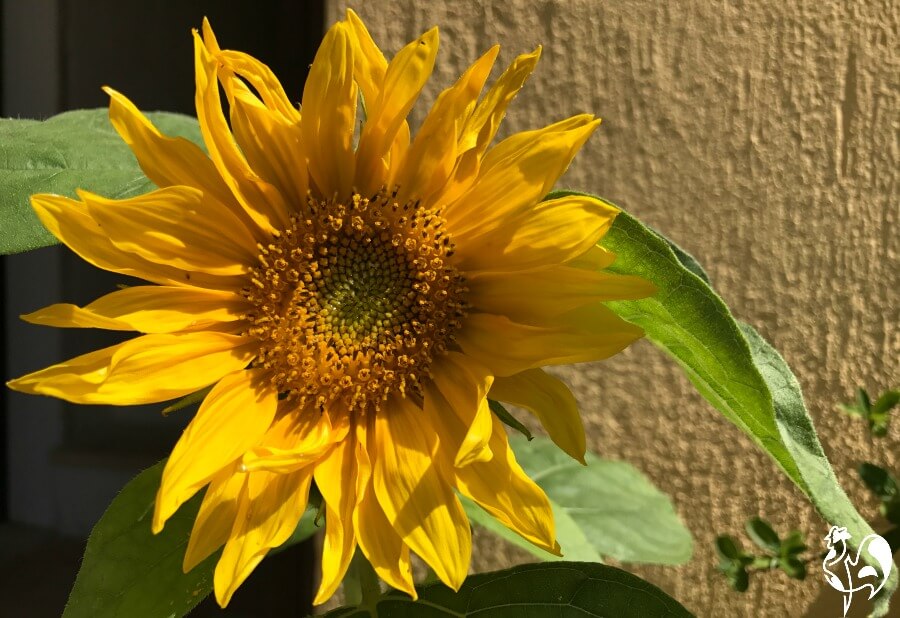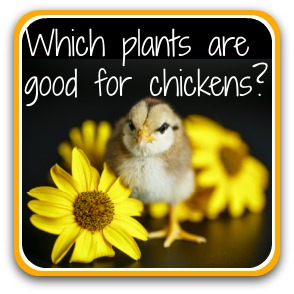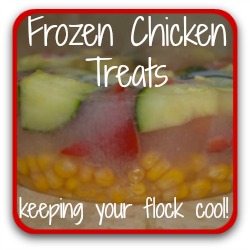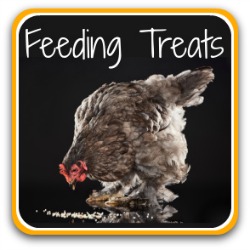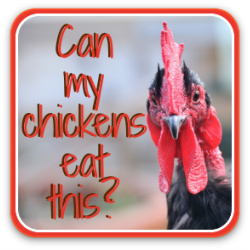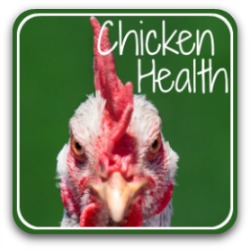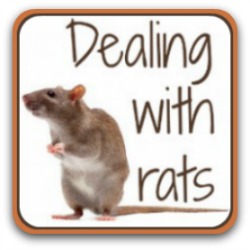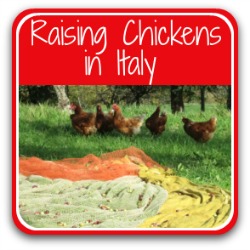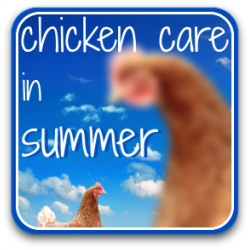Can chickens eat sunflower seeds?
Looking for an easy, inexpensive way of providing your flock with a tasty, high protein supplement to their diet?
Here's the answer – sunflowers!
They're joyful, they're a summer icon and an autumn treat, beloved of bees and a delight for children to grow.
They're also a great way of giving your chickens a protein boost.
Sunflowers.
Black or stripey: which type of sunflower seeds can chickens eat?
There are two types of sunflower seed: black and striped.
The black seeds are higher in oil content: they contain between 40 – 50%, depending on the variety. Striped seeds are larger, but they are highly processed and contain only about 25% oil.
The striped seeds are the variety most often sold for wild bird and chicken feed.
Which is why growing your own black seed varieties is much healthier for your flock – and more fun for you and your family.
Want a quick review of the best plants for chickens' health?
Here's a short video summary of plants and their benefits.
How to use this article.
If you're looking for some specific information, use these links to go to the relevant section. Otherwise, keep reading to make sure you get all the details.
Can chickens eat sunflower seeds? The benefits.
They are particularly high in levels of...
Vitamin "E": known to be vital for the poultry immune system and a protector against diseases like coccidiosis, e.coli and bronchitis(1).
Protein: high levels of protein (around 26%) make this a great boost for chickens at times of stress such as moulting and cold weather.
Oil: the high levels of linoleic acid(2, 3) increases weight and sets chickens up for the winter months, and adds to the nutritional value (and weight) of eggs.
Antioxidants: sunflowers are rich in natural antioxidants(4) - another boost to the poultry immune system.
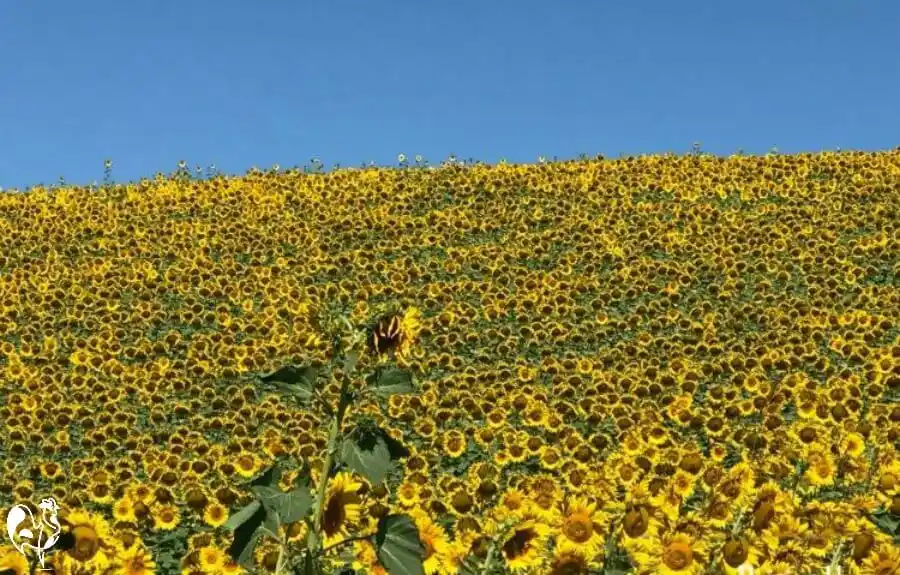 We're lucky enough to have our own sunflower field right behind our home in Italy.
We're lucky enough to have our own sunflower field right behind our home in Italy.Can chickens eat sunflower seeds from a shop?
Sunflower seeds as chicken feed can be bought, but they tend to be the striped varieties which are less beneficial. They often contain pesticides, and some brands add chemicals during processing to lengthen shelf life.
Growing your own is the ideal and can be done easily, even in a small space. You have control over the type, and you can be sure no chemicals are used.
But that's not always possible. If you can't grow your own buy the black, rather than the striped, seeds for your chickens. Make sure they're from a good supplier – some include parts of the woody stem and other debris in their packs.
These seeds (affiliate link) are from a recognised supplier and of good quality. They're not for growing though, only for feeding!
Sunflower meal is also available, but I don't recommend this. The processing decreases oil content to as low as 13% – some have as little as 1%.
Are sunflowers poisonous to chickens?
You may have seen information on the internet saying that sunflower seeds are harmful to chickens. Here are some myths, and the facts about them.
1. Sunflower seeds make chickens' feathers fall out.
This one probably came about because chickens tend to be fed sunflower seeds to help when they're moulting. So people saw moulting chickens being fed sunflower seeds, put 2 and 2 together made made 55.
They're actually one of the best high protein foods and help with moulting. During moulting is one of the best times to feed them to your flock.
2. They cause crops to become impacted.
If you fed your flock nothing but, or a high proportion of, sunflower seeds and they had no access to grit, this might be a problem. Otherwise, it really isn't.
Simply make sure your chickens have plenty of grit, either naturally or as a supplement, and do not over-feed. Use sunflowers as a treat.
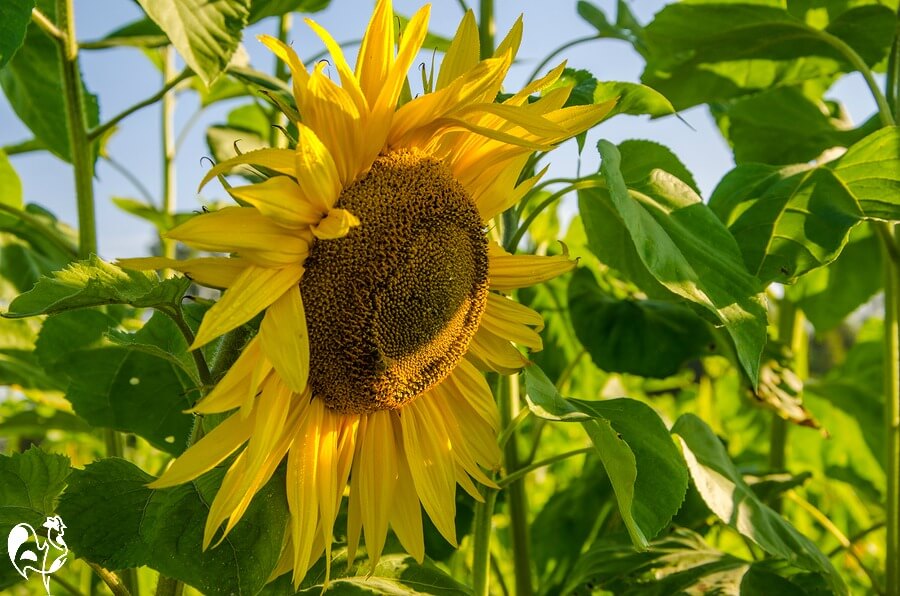 Sunny, bright, an icon of Italy, a summer delight and a great winter booster.
Sunny, bright, an icon of Italy, a summer delight and a great winter booster.3. Sunflower seeds make chickens fat.
Again, if you over-feed sunflower seeds, or any other high fat food, your chickens will get fat. And fat is known to be a potential cause of sudden chicken death.
- Feed as a treat, part of a balanced regime and only when chickens need it: when they're moulting, during particularly cold weather and at times of high stress such as after a predator attack.
- Always feed after the chickens have eaten their fill of their daily food, not before.
- And do not feed every day. A flock of five or six chickens should eat no more than a handful of seeds every three or four days.
How do you grow sunflowers?
Links on the rest of this page are "affiliate links". If you click on them and buy, I earn a small commission at no cost to you. I only recommend products I know and love and which I think will be genuinely useful to you. See my disclosure policy for more information.
Know the different varieties of sunflowers.
When we first moved to Italy, I had no idea there was such a huge range of sunflower varieties. There are early and late crops, different sizes and different colours.
Buy non-GMO varieties wherever you can.
This is a selection of those I've found most useful, which attract honey bees when they flower – another great reason to plant your own – and are fun to grow.
Dwarf sunflowers.
These are excellent to grow in small spaces or in pots, and great for little children as the sunflower head is low enough for them to get a good look at the developing seeds.
The head (where the seeds grow) are quite large, so you'll get plenty of seeds for your money.
Seeds for giant sunflowers!
These are really, really fun to grow. These sunflowers can grow between six and ten feet tall, with flower heads measuring as much as 20" across – although the average is more like 10", which will still produce a lot of seeds for your flock!
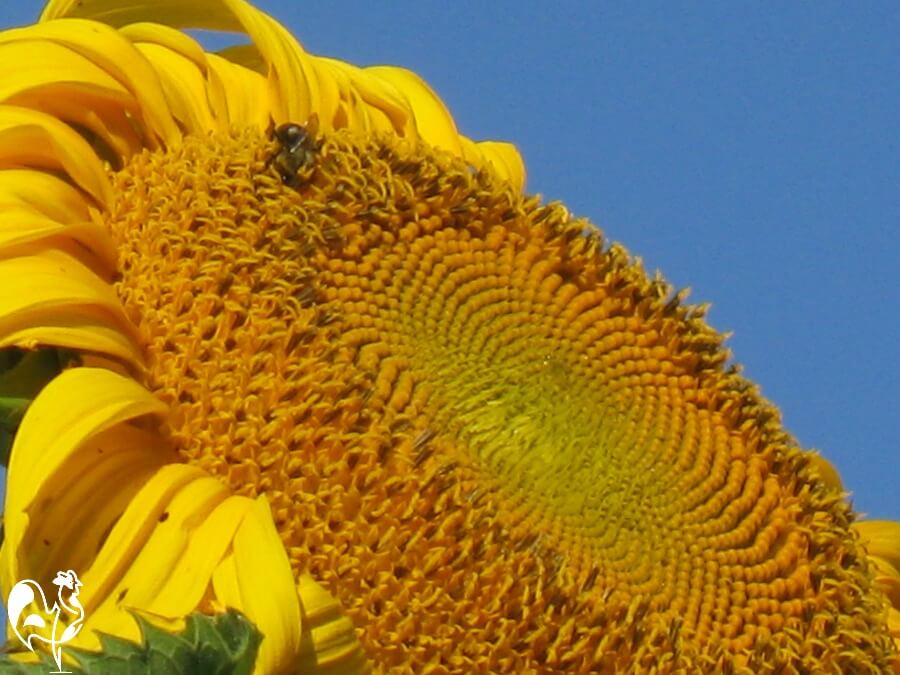 The head of a giant sunflower - common in Italy. Great for bees, great for seeds! Click here to buy.
The head of a giant sunflower - common in Italy. Great for bees, great for seeds! Click here to buy.These seeds are large and plump – just what your chickens will love. And they will produce well over 100 seeds per plant.
That's the reason you'll see them most often if you come to Italy – they give the best yield per plant.
Can chickens eat different colour sunflowers?
Yes – they contain the same black seeds as the yellow varieties.
You rarely see anything but yellow sunflowers grown as a crop in Italy's fields. The coloured varieties are grown mostly for florists' displays.
But if you'd like to add some colour to your sunflower planting scheme, there are lots of different coloured sunflowers on the market.
This variety is called "Chocolate Cherry" and is beautifully unusual.
How to plant sunflower seeds.
Firstly, when and where to plant.
- When you plant sunflower seeds will depend on your area. As a "rule of thumb", plant when the danger of frost has passed.
- Sunflower seedlings do best in a well-drained, fertile soil and full sun. They will grow in poor soil, but the heads will be small and the plants will look scrawny.
- If you want tall sunflowers, plant directly into the soil, don't start off in pots. Sunflowers have a long tap root even when very young, and pots restrict it.
- Sow giants about 18" apart, and thin out as they grow. Dwarf varieties (like my seedlings below) can be placed much closer together.
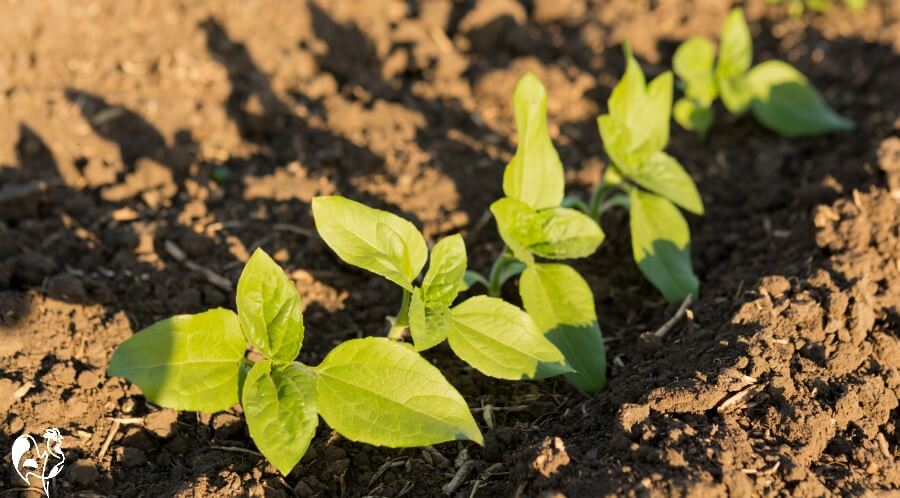
- Protect from birds until the first couple of real leaves have grown.
- Once established, they're easy to grow. Water the soil when it gets dry; add some fertiliser every week if you want particularly large heads.
- For tall varieties, make sure you have canes available to stake them as they grow.
- Then, sit back and enjoy the spectacle. As the tiny florets on the head develop, watch out for bees collecting the pollen – sunflowers are a special favourite.
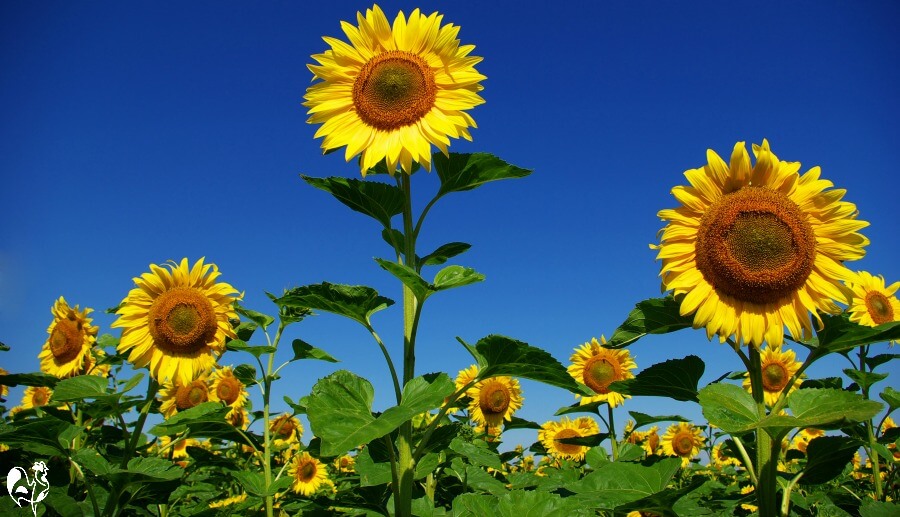 Sunflower fields in Italy are an iconic sign of summer - and we're lucky enough to have one!
Sunflower fields in Italy are an iconic sign of summer - and we're lucky enough to have one!When and how to harvest sunflower seeds for chickens to eat.
- Sunflowers have quite a short growing season. All too soon the heads begin to droop, which is a sign the seeds are starting to ripen. In rural Italy, harvest can be anything from late August to mid September.
- Your timing will depend on the variety, and your local climate.
- The dry seeds have the highest amount of oil, so if possible, leave them on the plant until the petals have gone and the head is hanging and completely black.
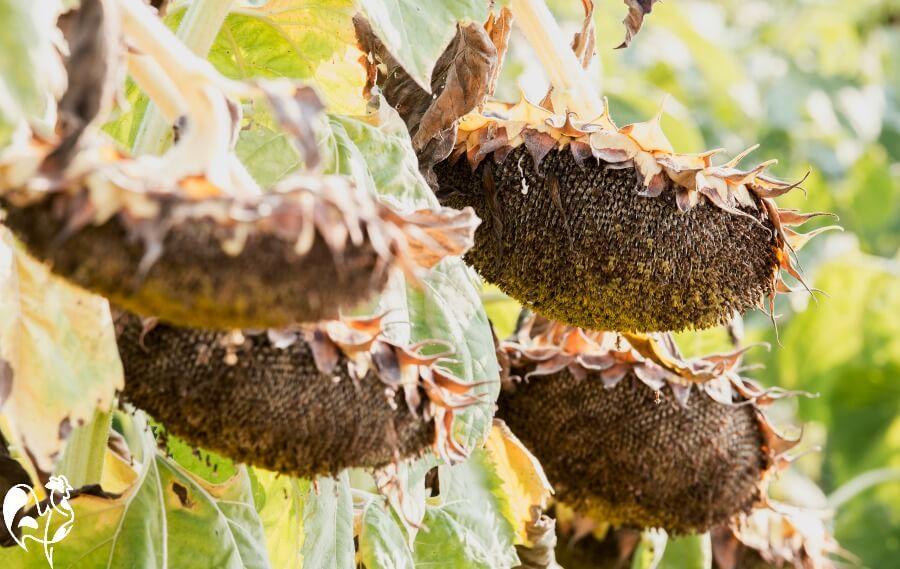 Make sure your sunflower heads are black with ripened seeds before you harvest.
Make sure your sunflower heads are black with ripened seeds before you harvest.- If you find wild birds eating the seeds, take the head off the plant and hang them inside to dry out.
- If you try to harvest too early, you'll find the oil will leave a black stain on your hands. It doesn't smell pleasant, either!
- When they're completely dried out, take the flower head and use your fingers to rub off the tiny flower heads.
- This sunflower was ready to harvest from our field in mid-September. Here, you can see some of the tiny florets still standing above some of the seeds. The rest have already fallen off.
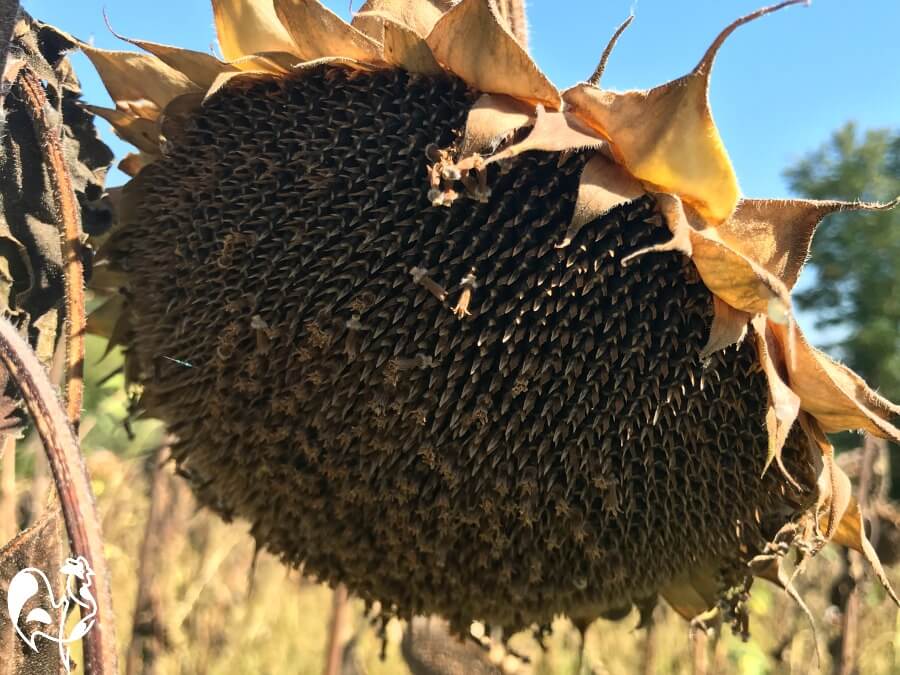 Tiny florets stand above the black seeds.
Tiny florets stand above the black seeds.Once the florets have fallen, you'll see the dried seeds sitting in their little pods all over the head. These are the seeds which contain all that healthy oil your chickens will love.
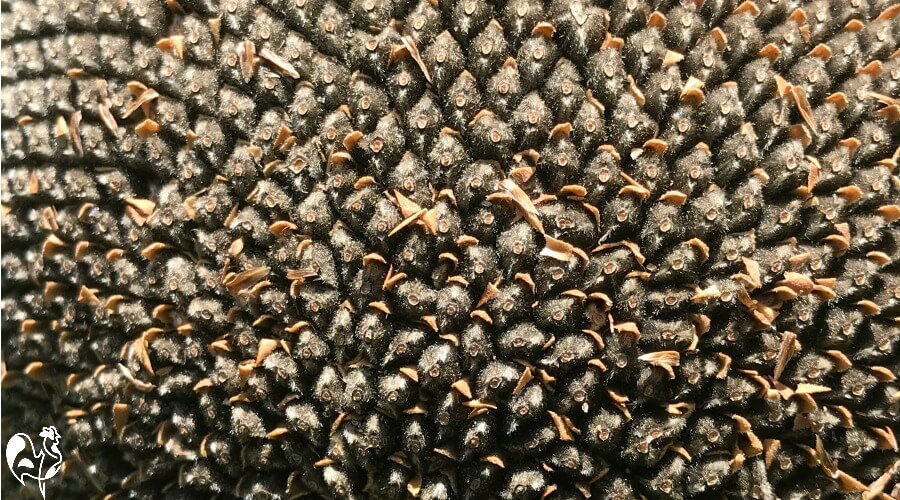 These black sunflower seeds are ready for harvesting.
These black sunflower seeds are ready for harvesting.
Feeding chickens sunflower seeds.
Your main problem will be not getting trampled in the stampede. Chickens love, love, love these little black seeds of goodness!
There are various ways of taking them out of the head. I simply bang them on a concrete block, where my flock know they can find them. The seeds drop out of the head easily.
- For adult chickens there's no need to chop them up – feed them whole.
- For baby chicks, chop the seeds finely.
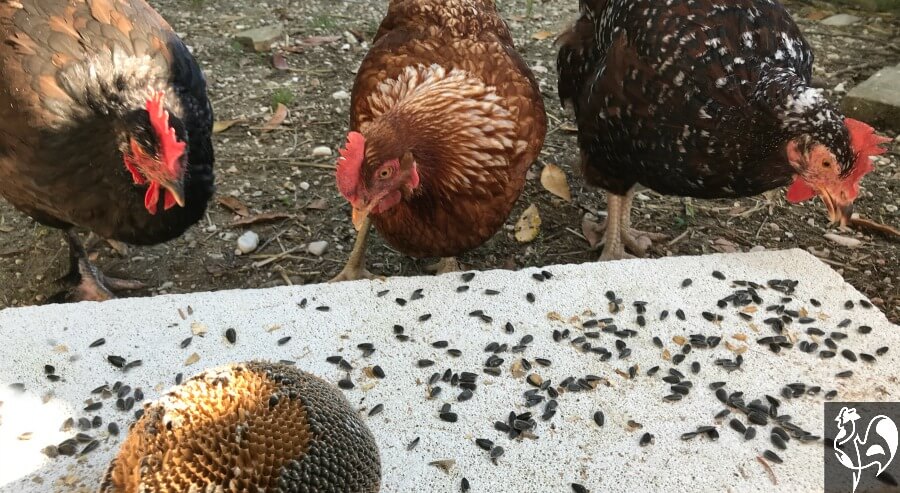 Some of my girls realise there are fresh sunflower seeds on offer!
Some of my girls realise there are fresh sunflower seeds on offer!Alternatively, hang the head just above the chickens' heads. They'll peck at the head, the seeds fall out, the chickens try to beat each other to get to them. Then they start the game all over again.
An ideal winter boredom buster for those days when greens and bugs are few and far between.
How to store sunflower seeds for chickens to eat all year round.
- On no account let them get damp – they'll produce an unhealthy mould.
- Store them in a rodent-proof container. It's not only chickens who like sunflower seeds – rats and mice love them, too.
- Stored in a dry, cool place they'll keep for up to three months. In a fridge, they'll last about a year.
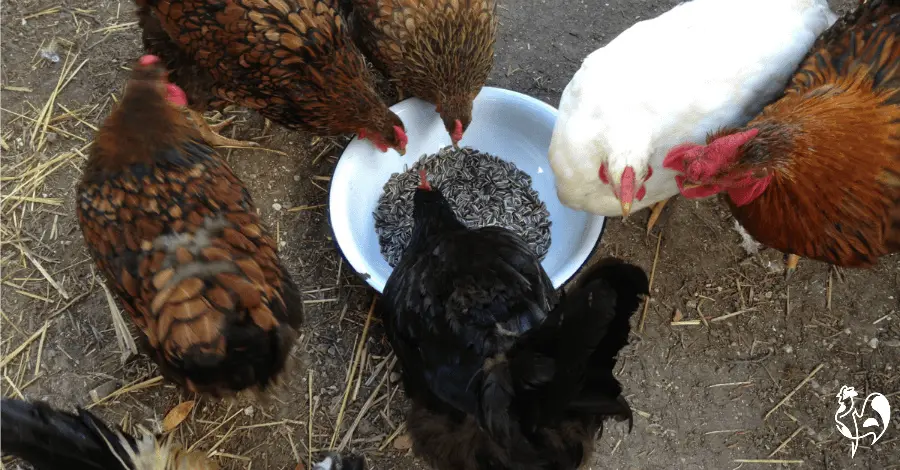 I hope your chickens enjoy sunflower seeds as much as mine do!
I hope your chickens enjoy sunflower seeds as much as mine do!Enjoy growing your own sunflower seeds for your chickens!
If you liked this article, these will be helpful too.
Sources and further reading.
The information I provide in this article and others is based not just on my own experience, but on evidenced facts from scientific, peer-reviewed research and books.
Some of the trusted sources I have used in this article are these.
1. Litta, G et al: Vitamin E: Vital for health and performance. Pub. Poultry World, 2014.
2. Senkoylu, N and Dale, N: Sunflower meal in poultry diets. Pub. World Poultry Science Journal, 1999.
3. Balnave, D: The importance of linoleic acid in poultry diets. Pub. Australian Livestock, 1981.
4. Rebole et al: Effect of dietary high-oleic acid sunflower seed... on broiler performance. Pub. US National Library of Medicine, 2006.
5. Jacob, Dr J: Using sunflower seed in organic poultry diets. Pub. University of Kentucky, 2014.
